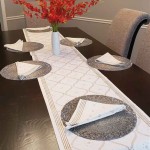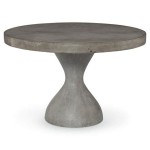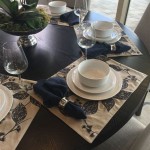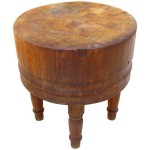Wedding Seating Chart Template for Round Tables: A Comprehensive Guide
Crafting a wedding seating chart is a critical element of wedding planning, contributing significantly to the overall atmosphere and guest experience. The configuration of tables, particularly the use of round tables, introduces specific considerations when designing an efficient and aesthetically pleasing seating arrangement. This article explores the nuances of creating wedding seating charts tailored for round tables, providing insights and strategies to optimize guest interaction and minimize logistical challenges.
Round tables are a popular choice for wedding receptions due to their ability to foster a sense of intimacy and facilitate conversation among guests. Unlike rectangular tables, which can sometimes create a feeling of distance, round tables encourage face-to-face interaction. However, this advantage necessitates careful planning to ensure that personalities and interests are appropriately matched, and that potential conflicts are avoided. The design and execution of the seating chart directly impact the success of the reception, influencing guest satisfaction and the flow of the event.
The process begins with an accurate understanding of the venue layout, the number of round tables available, and the capacity of each table. These factors dictate the overall structure of the seating chart and inform decisions regarding guest grouping. It is essential to obtain a detailed floor plan of the reception area, noting the placement of key elements such as the head table, dance floor, band or DJ area, buffet stations, and restrooms. This information allows for strategic placement of tables and minimizes potential disruptions to guest flow.
Furthermore, understanding the relationship dynamics among the guests is paramount. Consider family relationships, friendships, shared interests, and potential conflicts when assigning guests to specific tables. A well-thought-out seating chart can enhance existing connections and even foster new ones, leading to a more enjoyable and memorable experience for all attendees.
Understanding Round Table Capacity and Layout
The capacity of each round table is a crucial factor in determining the overall structure of the wedding seating chart. Round tables typically accommodate between eight and twelve guests, depending on their diameter and the type of chairs used. It is important to consult with the venue or rental company to ascertain the precise capacity of the tables being used.
Overcrowding a table can lead to discomfort and hinder conversation, while leaving too much space can create a feeling of emptiness. Strive for a balance that allows guests to move comfortably and engage in easy conversation. A seating capacity of ten guests per table is often considered ideal, providing ample space without sacrificing intimacy.
The physical layout of the reception area also influences table placement. Tables should be arranged to allow for easy access to the dance floor, buffet stations, and other key areas. Avoid placing tables in obstructed areas or near sources of high noise levels, such as speakers or busy walkways. The goal is to create a comfortable and visually appealing environment that encourages guest interaction and enjoyment.
Consider the proximity of each table to the head table. Traditionally, the closest tables are reserved for immediate family and close friends of the bride and groom. This arrangement symbolizes the importance of these relationships and ensures that key individuals are prominently located within the reception area. As the distance from the head table increases, the seating arrangement can become more flexible, accommodating guests with whom the couple has less frequent contact.
Pay attention to the sightlines from each table. Guests should have a clear view of the head table, the dance floor, and any other focal points within the reception area. Avoid placing tables in such a way that guests are forced to strain their necks or have obstructed views. This demonstrates consideration for their comfort and ensures that they feel included in the overall celebration.
Accessibility is another critical consideration. Ensure that tables are placed in such a way that guests with mobility issues can easily navigate the reception area. Provide ample space between tables to accommodate wheelchairs or other mobility aids. Consider placing guests with mobility issues closer to restrooms or exits to minimize potential difficulties.
Strategies for Grouping Guests at Round Tables
Effective guest grouping is the cornerstone of a successful wedding seating chart. The objective is to create tables where guests feel comfortable, can easily engage in conversation, and share common interests. Several strategies can be employed to achieve this goal, each with its own set of advantages and considerations.
Consider grouping guests based on family relationships. Immediate family members should be seated together, or at least in close proximity, to foster a sense of unity and support. Extended family members, such as aunts, uncles, and cousins, can be grouped together based on age, shared interests, or geographic proximity. This allows them to reconnect and share in the celebration.
Friends form another important category for grouping. Consider seating close friends together, regardless of their relationship to the bride or groom. This creates a relaxed and comfortable atmosphere where guests can easily engage in conversation. Also, consider grouping friends who have similar interests or social circles. This increases the likelihood that they will enjoy each other's company and form new connections.
Work colleagues can be grouped together at a separate table or integrated into other tables based on their relationships with other guests. Consider the personalities and working styles of different colleagues when making seating assignments. Avoid placing individuals with known conflicts or competing interests at the same table. The goal is to create a positive and harmonious environment for everyone.
Singles can be strategically placed at tables with other guests of similar age and interests. This provides an opportunity for them to meet new people and potentially form romantic connections. Avoid isolating singles at a table exclusively for single individuals, as this can create an uncomfortable or self-conscious atmosphere.
Children should be seated with their parents or guardians. Consider providing a designated children's table with activities and entertainment to keep them engaged during the reception. This allows parents to relax and enjoy the celebration without constantly worrying about their children's behavior.
When creating your seating chart, it is important to consider cultural or religious traditions that may influence seating arrangements. Some cultures have specific customs regarding family seating or the separation of genders. Respect these traditions and accommodate them to the best of your ability. Consult with family members or cultural advisors to ensure that the seating chart is respectful and appropriate.
Utilizing Wedding Seating Chart Templates
Wedding seating chart templates offer a structured framework for organizing guest information and creating a visually appealing seating arrangement. These templates typically include placeholders for guest names, table numbers, and other relevant details. They can be customized to reflect the specific layout of the reception area and the number of round tables being used.
Several different types of wedding seating chart templates are available, ranging from simple spreadsheet-based templates to more sophisticated online tools. Spreadsheet templates allow you to manually enter guest information and assign them to specific tables. Online tools often offer features such as drag-and-drop functionality, interactive floor plans, and guest relationship management. These features can streamline the seating chart creation process and make it easier to visualize the overall arrangement.
When selecting a wedding seating chart template, consider the following factors: ease of use, customization options, and compatibility with other wedding planning tools. Choose a template that is intuitive and easy to navigate, even if you are not technically proficient. Ensure that the template can be customized to reflect the specific layout of your reception area and the number of round tables being used.
Most importantly, the template ought to allow for detailed guest management. The seating chart template should allow for the input of relevant guest information such as dietary restrictions, accessibility needs, and relationships with other guests. This information can be used to make informed decisions about seating assignments and ensure that all guests are comfortable and accommodated.
Printable templates are often useful for sharing iterations of the seating chart with family members and wedding planners. These templates are helpful for visual organization of the table arrangements. They are most effective when coupled with a corresponding textual directory of table seating, to make it easier for guests to find their seats at the wedding reception.
Regardless of the type of template used, the process of creating a wedding seating chart requires careful planning and attention to detail. Start by gathering a comprehensive list of guests and their relationships to the bride and groom. Then, use the strategies outlined above to group guests at specific tables. Finally, use the template to create a visually appealing and easily navigable seating chart that will enhance the overall guest experience. Regularly review and update the seating chart as RSVP responses are received and guest information changes.

Blank Wedding Seating Charts 10 Free Printables Printablee

8 Person Round Table Seating Chart

Free Table Seating Plan Templates

Free Printable Round Seating Chart Template For Weddings And Parties The Photo To Go Website A Version

Wedding Seating Plan Template Planner

Seating Plan Chart 90 Pax Round Wedding Table Display For Guest Names Draft Seat Planner Instant Printable Planning

Seating Chart Maker Create Wedding Arrangements

Printable Wedding Table Seating Chart Template Round Planner Event Arrangement Head Plans Seat Map

Editable Wedding Table Seating Larger Weddings Numbered From 1 56

Seating Chart Maker Create Wedding Arrangements
Related Posts








